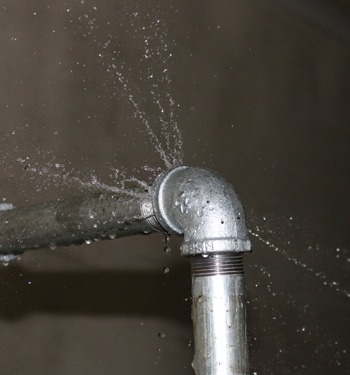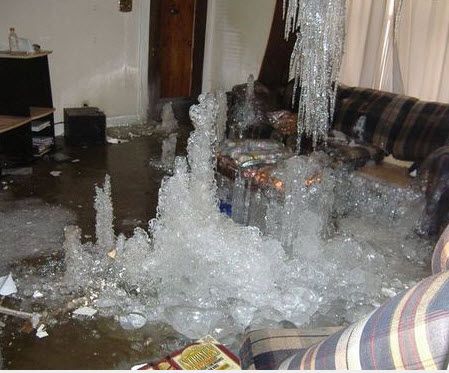Just about everyone may have their private perception with regards to What To Do And What Not To Do When Dealing With Water Damage.

What should you do if a water pipe bursts in your home? Do you want a mini-waterfall and flooding in an area of your home? You must act fast if you locate on your own in this circumstance. The longer you wait, the a lot more serious the damage that can happen to your residential or commercial property. The clearheadedness is type in these events. For these reasons, you need to find out exactly how to act in the event of a burst water pipe. Look into the adhering to suggestions below to aid you act fast because time is important.
Shut down the Key Waterline Shutoff
The first thing to do? Close the shut-off valve. Look for the neighborhood shut-off shutoff to shut off the water in one specific location just. If you don't recognize where the localized shut-off valve is, choose the primary water line shutoff as well as turn it off. This action will certainly cut off the water immediately in your entire house. Generally, the primary shutoff is discovered outside the home beside the water meter. If it's not there, you can also locate it in two areas: in the basement at eye degree or the 1st flooring on the ground. Generally, building contractors put the shut-off shutoff in the main ground level shower room or best next to it.
Call Water Damage Reconstruction Pros for Assistance
After shutting the water resource, call the specialists for help. With their professional aid, you can prevent much larger water damages consisting of deformed baseboards, loose tiles, or damaged frameworks.
Record the Damages For Insurance
While you're waiting for the pros to show up, obtain some paperwork of the damage triggered by the errant pipe. Do close-up shots of the damaged prized possessions as well as spots.
Salvage Things That Can Be Saved
Take a look at the damaged items and take out the most vital ones from the pile when you're done taking photos. Dry them off in a dry/warm place away from the broken location as well as try to preserve them as high as you can. Drag as much dampness as you can to the material so it can begin to dry.
Begin the Drying Process
You require to begin the drying process asap. Luckily, the water from your waterlines is already tidy so you do not need to bother with sewage system water. The moving water may have disturbed the dirt as well as debris in your carpetings as well as floorboards. In this situation, put some handwear covers on as well as begin some troubleshooting. Use pails to discard out the water. Blot out as much water as you can from the surface areas with old towels. Switch on an electrical follower or open your windows to advertise air flow. These actions will certainly hasten to completely dry and prevent mold and also mildew development.
Professionals are the only people certified to assess properly and also fix the burs pipelines and also subsequent damage. They generally give silent red flags like gurgling paint, water discolorations.
What should you do if a water pipe bursts in your residence? For these reasons, you need to discover just how to act in the event of a burst water pipeline. After closing the water resource, call the professionals for assistance. With their specialist help, you can avoid a lot bigger water damages including distorted walls, loosened tiles, or damaged structures. Luckily, the water from your waterlines is currently tidy so you don't have to worry regarding drain water.
How to Handle a Burst Pipe and Minimize Damage
Steps to Take Ahead of Time
If you own property in an area that experiences cold weather, you need to be aware of seasonal maintenance tasks that will help you protect your property as the weather changes each year. One of the most important steps is to winterize your pipes to ensure they won't freeze or burst when the temperature drops. This includes action items like insulating any exposed pipes, detaching garden hoses and covering outdoor faucets. If the weather gets cold enough, you may even consider leaving a faucet dripping or opening cabinet doors during the coldest parts of the day.
No matter how prepared you might be, accidents and emergencies still happen. You'd be wise to set up a savings account specifically for your property so you have a "rainy day" fund set aside for unexpected expenses. All homes—regardless of age, location or condition—will inevitably need some form of emergency repair.
Steps to Take for Frozen Pipes
A frozen pipe will not necessarily burst, so if you can catch a frozen pipe early on, you could save yourself a major headache. When your area experiences frigid temperatures, be sure to check your plumbing and keep an eye out for warning signs like faucets only releasing small amounts of water or toilets not refilling when flushed. If you do run into one of these issues, you're likely dealing with a frozen pipe.
If this happens, your first step should be to cut off the water supply to that section of the plumbing. Expanding and freezing water can quickly cause damage. Even if the water supply is shut off, you will likely still deal with some leaking from the water that defrosts after the pipe has thawed. Be prepared with a mop, bucket and/or towels to quickly soak up any excess water.
In order to thaw a frozen pipe, you can use a space heater, infrared or incandescent heat lamp, or even a hairdryer to warm up the frozen area. Heat tape is also an option and should be used according to manufacturer instructions. Do not use any sort of open flame to thaw frozen pipes, as it poses a major fire hazard and can damage your pipes further.
Steps to Take for a Burst Pipe
Water damage claims are the second most common insurance claim in the U.S. When you're dealing with a frozen pipe, the water continues to expand as it freezes, which creates pressure that can cause a pipe to burst. When this happens, the crack or leak in the pipe allows water flow from the pipe to enter your home where it shouldn't. If a pipe does burst, you need to act quickly to mitigate property damage and repair cost.
- Your very first step should be to shut off your main water supply to minimize flooding—typically the most expensive damage to address.
- Once you've shut off the water supply, make sure you identify the entire area that has been impacted by the leak. Remove as much water as possible—as quickly as possible—using a mop, sponges, towels or a shop vacuum or wet/dry vacuum.
- To prevent long-term damage due to moisture build-up, run a dehumidifier or fan in the affected area.
- Contact a licensed plumber to ensure the pipe is correctly repaired before running any water to that section of the home again.
Burst pipes and the associated water damage are something you absolutely want to avoid as a property owner. If you've had to learn your lesson the hard way, don't let yourself get caught in a similar situation during the next spell of cold weather. The best way to deal with frozen or burst pipes is to prevent them in the first place—proactive winter maintenance will save you time, money and a whole lot of stress.

Hopefully you enjoyed reading our section about Do’s And Don’ts For Homeowners Managing With Water Damage. Thank you for finding the time to read through our blog. Do you know about anybody else who is fascinated by The Do’s And Don’ts When Water Floods Your Home? Feel free to promote it. Bless you for your time. Come back soon.
Comments on “What to Know About Septic Tank Maintenance for Every Household”